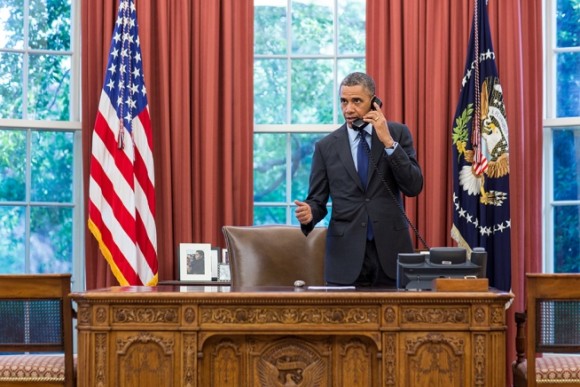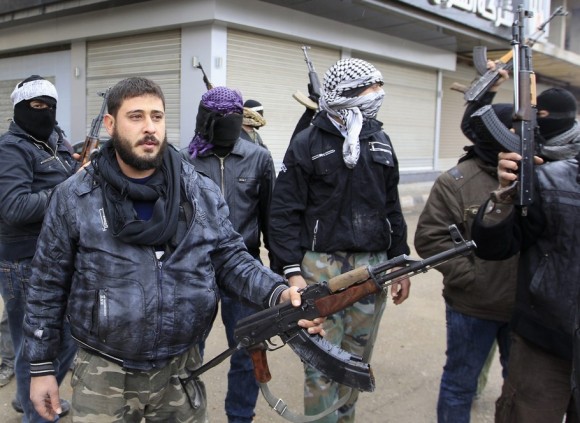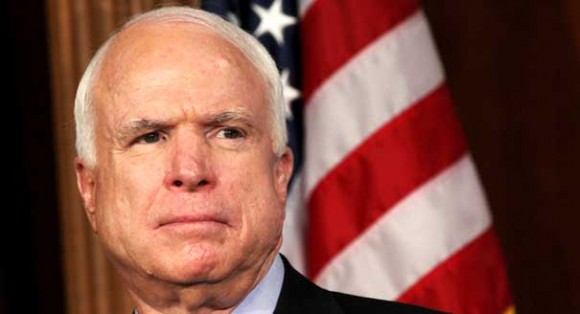
There’s a discussion over at the Lawfare blog about whether or not finally repealing the expansive war powers authorized in the 2001 AUMF will actually do anything to constrain Obama and future U.S. presidents.
Mind you, the Lawfare crowd includes former Bush administration officials who wouldn’t necessarily be opposed to the expanded executive war powers usurped in the post-9/11 world being made permanent. But the discussion is revealing nonetheless.
Robert (Bobby) Chesney argues that while the AUMF is the most immediate official justification for the programs of indefinite detention and borderless drone strikes, the president has acquired so much unprecedented power since 9/11 that the AUMF isn’t even necessary to continue to carry them out.
According to Chesney, “the current shadow war approach to counterterrorism doesn’t really require an armed-conflict predicate – or an AUMF, for that matter.” Instead, the president will retain the ability to drone bomb anybody, anywhere in the world because the Executive Branch will justify it with the same self-defense rationale as it does now. (That self-defense rationale is, I think, indefensible, resting as it does on an untenable redefinition of “imminence”).
Here is Jack Goldsmith following up Chesney’s post:
First, I agree with Bobby’s implication that we are on the road toward post-AUMF uses of military force around the globe justified entirely on the basis of self-defense and the President’s Article II powers. Self-defensive military actions based on Article II are (I think) what Jeh Johnson was talking about when he referred to “military assets available in reserve to address continuing and imminent [extra-AUMF] terrorist threats” and what Harold Koh meant when he said “I see no proof that the U.S. lacks legal authority to defend itself against those [beyond the AUMF] . . . who pose to us a genuine and imminent threat,” and what the President probably had in mind when he said that “[o]ur systematic effort to dismantle terrorist organizations must continue” even after the AUMF-war ends.
Goldsmith adds: “it would be an unprecedented expansion of Article II authority if the scope and scale of current military and paramilitary operations outside Afghanistan today were justified under Article II.”
It has become fashionable in recent weeks to openly discuss the revision or even repeal of the outdated AUMF. Carl Levin and John McCain have been advocating such a change. And Obama put it in his speech last week, saying he “look[s] forward to engaging Congress and the American people in efforts to refine, and ultimately repeal, the AUMF’s mandate.” “This war, like all wars,” he said, “must end.”
But that is just grandstanding if we grant that Obama knows what the Lawfare folks know, that his war powers won’t be curtailed if and when the AUMF is repealed.
And that is the world we now live in. The warfare state no longer needs legal sanction to execute a global assassination program and selective application of habeas corpus. Those aren’t just powers the president gets in times of war, you see. They are inherent.





 In the U.S., our job for today is clear. It’s Memorial Day and there are a solemn thoughts to have and wreaths to lay. “Ultimate sacrifice” must be repeated again and again. And as MSNBC’s Chris Hayes
In the U.S., our job for today is clear. It’s Memorial Day and there are a solemn thoughts to have and wreaths to lay. “Ultimate sacrifice” must be repeated again and again. And as MSNBC’s Chris Hayes

